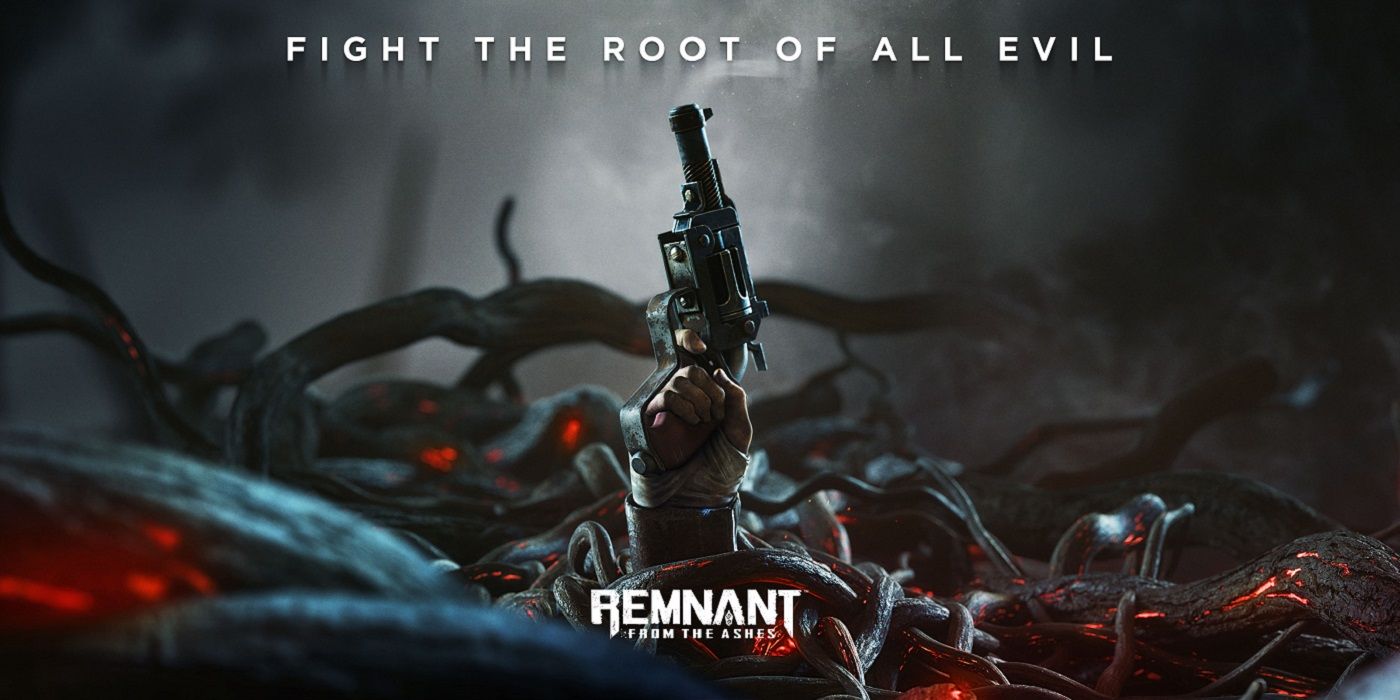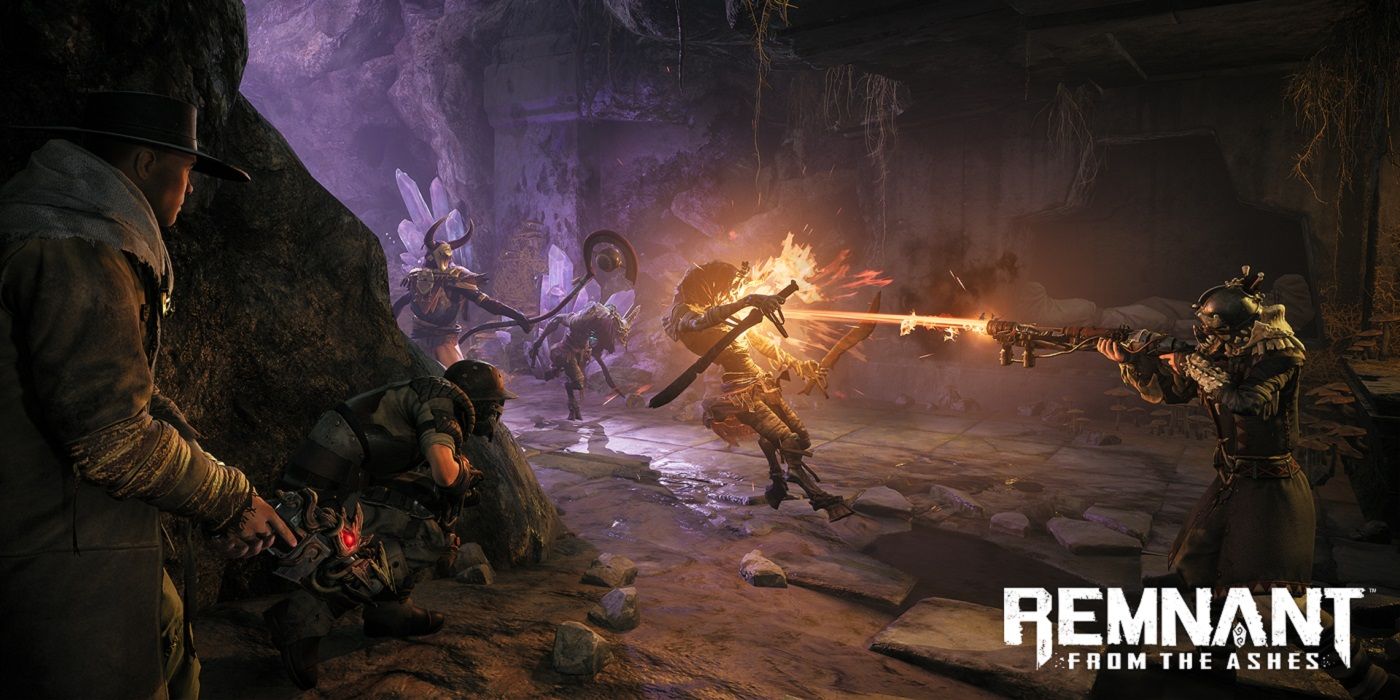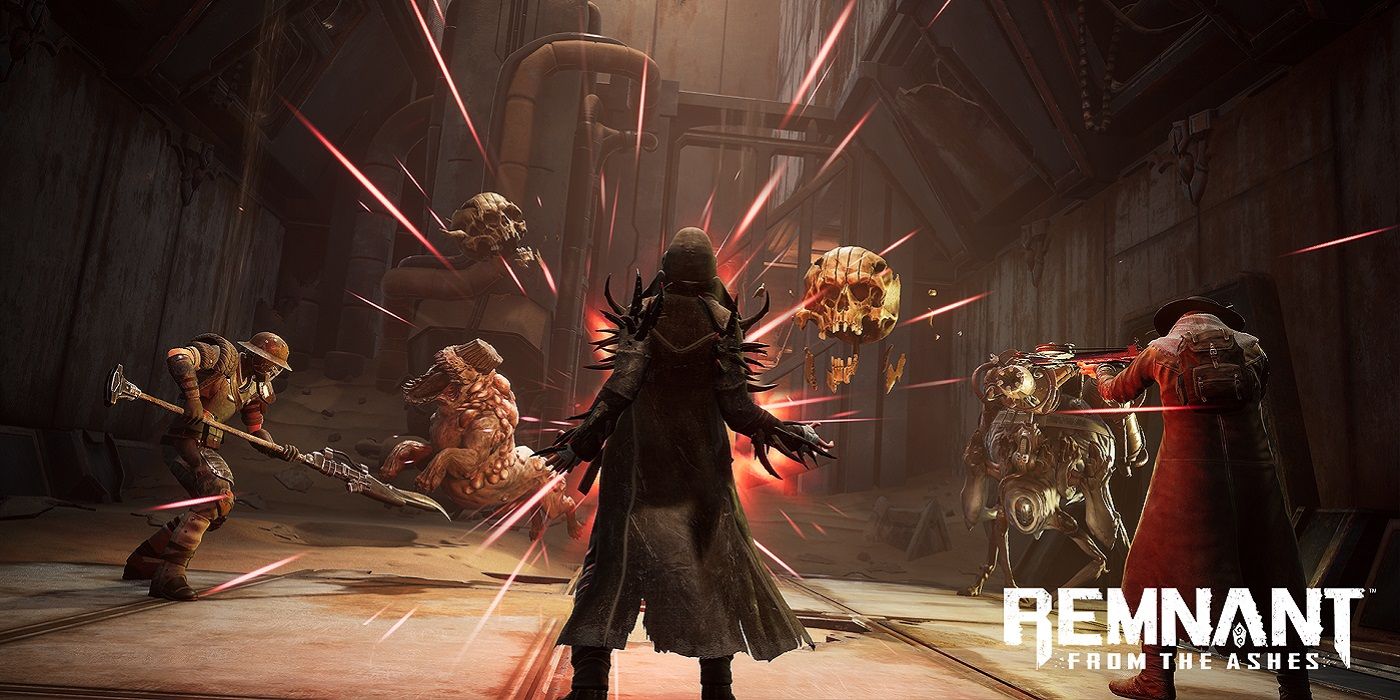Darksiders 3 was a misfire for Gunfire Games. It was buggy and broken at launch, and its attempt to chase after the Dark Souls clout with its combat was polarizing. In our Darksiders 3 review, we cited a number of other problems that we experienced with the game, and so needless to say, when we saw that Gunfire Games was yet again trying its hand Souls-like with Remnant: From the Ashes, we were expecting another flop. We were wrong.
Remnant: From the Ashes is one of the better Souls-like games out there, taking the best elements of From Software's Souls franchise while also delivering a distinctly unique experience. Like Souls games, Remnant is built around intense, tough boss fights, but it stands out because of its gunplay, fun co-op, and rewarding progression that makes players feel like they're constantly moving forward, even in the face of defeat.
Remnant is not about crushing players beneath its heel and frustrating them by robbing them of XP when they fail. Instead, players get to keep their progress, meaning that they can fail against a single boss a dozen times and will still be accumulating XP that they can spend on traits to improve their character. Largely thanks to its progression and customization options, Remnant manages to be a challenging game without being frustrating, which is a balance that a lot of similar games struggle to achieve.
Much of the challenge in Remnant: From the Ashes comes from the boss fights, which are easily the highlight of the experience. It's always exciting to see the genre standard fog leading to a boss room, as just seeing the creative boss designs is a treat. Each boss is unique, with their own mechanics that force players to employ different strategies. Tackling the bosses in co-op with friends is especially fun, as players are able to coordinate their abilities and loadouts to give themselves the best shot at victory.
While there are a handful of bosses that won't give players too much trouble, many of the boss fights will take multiple attempts. Smaller enemies often spawn in the middle of these battles as well, with Remnant overwhelming players with foes. This ramps up the tension considerably and makes the boss encounters that much more thrilling.
What makes the boss fights in Remnant even more compelling is that there is almost a puzzle-solving element to them. Players need to pay close attention to each boss's tell to avoid certain attacks, whether it be the way the boss moves before it strikes or listening for audio cues. Some of the bosses even have alternate ways to kill them that can make the fights a little easier and result in different loot drops, which adds an extra layer of strategy to the boss encounters.
Speaking of loot, Remnant also functions somewhat as a looter-shooter, but its approach isn't what some would expect. Whereas other looter-shooters like to overwhelm players with loot so that they're constantly having to fiddle with their gear, Remnant: From the Ashes doles out new weapons and armor very rarely. This makes it exciting whenever players come across a new weapon, especially since all of the weapons in the game are unique and not just palette-swaps with slightly different stats.
Another benefit to the slow drip loot approach in Remnant is that players never have to feel bad about dumping materials into their older gear to level them up. Players can level even their starting weapons to absurd damage levels in Remnant if they invest enough in them. While this may seem overpowered, the game reins things in a bit by making sure players can only access certain upgrade materials in later worlds. For example, Forged Iron isn't available in the game until players complete the first world (Earth) and reach the second world (Rhom), so their weapons will be stuck at level 5 until then.
Players will find some of the best and rarest loot in Remnant (like the Chicago Typewriter in the early portions of the game) by straying off the beaten path and exploring the game world. There are many optional dungeons to find that are spread throughout Remnant, complete with their own optional boss fights and loot. The game certainly rewards players who take the time to thoroughly explore it, and so they will feel compelled to search every nook and cranny.
Unfortunately, exploration is one area where Remnant actually missteps. The game doesn't hold the player's hand, which is fine, but sometimes figuring out where to go is needlessly confusing. Levels are procedurally generated, which means that players can't exactly look up where they need to go either. Quests are often vague as well, sometimes providing virtually no direction and leaving players to wander aimlessly until they stumble upon the NPC they need to talk to or area they need to go to next.
It also doesn't help that everything in any given biome looks very familiar, which is especially a problem on Earth. Earth sees players mainly exploring destroyed city streets and sewers, but there aren't many landmarks to take note of and even the dungeon exits/entrances look the same. Players will likely find it hard to keep track if they already went through a manhole leading to a dungeon or not, which means potentially wasting time at the loading screen when they wind up somewhere they've already been to before. These problems are mitigated somewhat if players check the map frequently and take note of everywhere they have and haven't been, but they may not think to do that initially.
Making exploration a little more straightforward would be appreciated, and it's not the only quality-of-life change that could be made in Remnant, with the rest mainly regarding co-op. While the co-op in the game is a blast and is really what makes Remnant something special, there are some improvements that could make it even better. For one, progression does not carry over for co-op partners, which makes the already somewhat frustrating exploration an extra chore. And secondly, co-op players have to take turns talking to merchants one at a time, which makes return trips to the Ward 13 home base take longer than they need to.
Speaking of Ward 13, it's there where players will interact with Remnant's various NPCs, like the bizarre Root Mother. Ward 13 is also home to its own secrets and hidden loot, making it just as worth it to explore as any of the other game worlds. Players will be visiting Ward 13 frequently during their time with Remnant: From the Ashes, but luckily the lore there makes it an interesting place and more than just a lifeless hub.
Lore overall in Remnant is arguably a weakpoint, as the story is fairly bland, but the characters in the story are so weird that we really didn't care. For example, the aforementioned Root Mother, who is important as she upgrades the player's Dragon Heart item, literally has chunks of tree roots sticking out of her body, and she looks so creepy that it still made the scenes with her at least interesting to watch. The plot was clearly an afterthought in this game, but it's still fun to learn about Remnant's world and see all of the strange characters that Gunfire Games dreamed up.
Its characters, interesting world, and incredible boss fights make Remnant: From the Ashes hard to put down. While it clearly takes inspiration from Dark Souls, Remnant is much more than the Darks Souls with guns label its been given, and comes into its own as a completely unique experience. There are some minor quality-of-life changes that could be made to make the game even better, but it's still one of the best games of the year regardless, especially when played in co-op.
Remnant: From the Ashes is out now for PC, PS4, and Xbox One. Game Rant was provided a PC code for this review.





